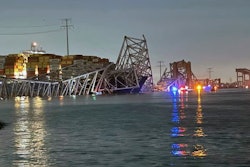The trucking industry plays a critical role in the economy.
Trucks move roughly 72% of the nation's freight by weight. A truck covers 600 miles per day and about 1,500 miles a week to deliver up to 45,000 pounds of goods such as food, medicine, raw materials and other daily essentials to communities and industries everywhere.
Trucking is one of the most popular and cost effective ways to transfer goods. In 2022, there were more than 3 million truck tractors on the road. Trucking accounts for 80.4% of U.S. freight costs and is four-times larger than rail, air, and ocean freight combined because trucking is faster and more cost effective. Simply put, if trucks stop moving, our economy and supply chain stops moving.
Statistics show that the more trucks there are on the road the more risk there is of accidents, and there are more trucks on the road. The transportation industry has made incredible progress on road safety over the last century; innovations like seatbelts, airbags and emergency brake assist help to keep us safe. But despite years of progress, road safety is worsening with traffic deaths reaching a 16-year high in 2021, with more than 3,700 of the fatal crashes involving large trucks. These are grim statistics that showed only a slight letup in 2022. In 2021, transportation incidents were the most frequent cause of work-related death, leading to the loss of nearly 2,000 lives.
The pandemic exacerbated existing challenges in the trucking industry, including high turnover rates, an aging workforce, long hours and disgruntled employees who aren’t paid for time spent waiting at ports, warehouses and distribution centers. These trends don’t bode well for the trucking industry and, in turn, America’s road safety. But there are tools available to reverse this trend.
Nuclear verdicts on the rise
The value of human life cannot be measured, of course, but the high cost of accidents also cannot be ignored. The Federal Motor Carrier Safety Administration says the average cost of a fatal motor vehicle collision reaches as high as $7 million when a large truck is involved. But with the drastic rise in nuclear verdicts – a verdict in excess of $10 million – these numbers are soaring. Nuclear verdicts further increase already high insurance rates, leaving the business to foot a majority of the bill and in many cases, forcing them to go out of business.
To cut costs, some operators are scaling back on insurance, putting them at greater risk if they’re involved in a crash. Meanwhile, a debated report from the American Trucking Association suggests that car drivers are more often at fault than a truck driver in the case of a car accident. AI Dashcams are a simple and indisputable tool to settle this debate.
AI dashcams are increasing road safety
AI Dashcams have been proven to proactively reduce unsafe driving behavior like drowsiness, speeding, close following and cell phone use by alerting drivers in real-time to modify driving behaviors. Risk scoring gives fleet managers a holistic view of driver performance over time to identify high-risk drivers that need more attention or top performers that deserve recognition.
A two-year analysis of more than 5,000 fleets with AI-enabled dashcams and frequent coaching of drivers found that the approach resulted in 50% fewer accidents and 56% fewer unsafe driving incidents. And if an accident occurs, the dashcam can quickly dispatch emergency medical care, notify the insurer, and exonerate drivers who are wrongfully accused of causing the crash.
Taking a proactive approach to road safety prevents crashes and decreases accident and insurance costs. The industry is still in the early days of driver safety innovation but when AI is unleashed, the return on investment is clear – both in lives saved and costs avoided.
Jai Ranganathan is the chief product officer at the fleet technology company Motive.












